Digital Poster
AI-Based Acquisition & Reconstruction: Part II
ISMRM & ISMRT Annual Meeting & Exhibition • 10-15 May 2025 • Honolulu, Hawai'i

 |
Computer Number: 33
2763. Representation
learning for ultra-low-field brain MRI super-resolution
X. Li, V. Lau, C. Man, A. Leong, Y. Zhao, E. Wu
The University of Hong Kong, Hong Kong, China
Impact: Enhancing image resolution and fidelity for ULF
brain imaging at 0.055T using data-driven 3D deep learning
approach. Potentially enable portable and point-of-care
diagnosis.
|
|
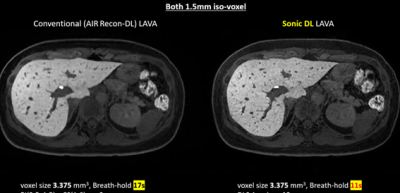 |
Computer Number: 34
2764. Fast
hepatobiliary phase gadoxetate-enhanced imaging under
breath-holding utilizing DL reconstruction (Sonic DL):
preliminary experience
K. Sato, S. Tanaka, R. Murayama, Y. Takayama, A. Nozaki, X.
Zhu, T. Cashen, A. Guidon, T. Wakayama, K. Yoshimitsu
Fukuoka University, Fukuoka prefecture, Japan
Impact: DLS-LAVA enables radiologists to obtain
high-quality HBP images with reduced scan time, enhancing
patient comfort and diagnostic precision compared to
conventional LAVA. This advancement is especially valuable
for patients with limited breath-holding capacity.
|
|
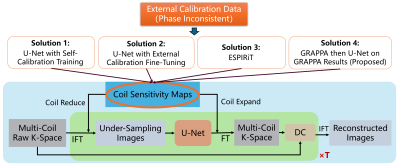 |
Computer Number: 35
2765. Phase
Inconsistency Problem of VarNet Reconstruction with External
Calibration Data
K. Yang, W. Zhou, L. Mei, Y. Liu, M. Lyu
Shenzhen Technology University, Shenzhen, China
Impact:
The proposed GRAPPA-based workaround solution to mitigate phase inconsistency improves the ability of E2E VarNet to utilize external calibration data, enhancing reconstruction quality and expanding its potential applications in research. |
|
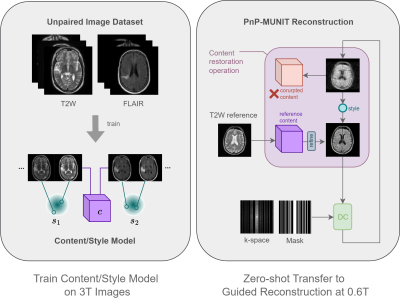 |
Computer Number: 36
2766. Accelerated
FLAIR imaging at 0.6T using T2W-guided multi-contrast deep
learning-based reconstruction using a Zero-Shot approach
N. Jabarimani, C. Rao, E. Ercan, Y. Dong, N. Pezzotti, M.
Doneva, M. van Osch, M. Staring, M. Nagtegaal
Leiden University Medical Center, Leiden, Netherlands
Impact:
We showed that FLAIR and T2-weighted scans can be used for contrast/style-based reconstruction methods, even when trained at 3T data directly applied to 0.6T data. Resulting improved image quality improves the usability of mid-field MRI.
|
|
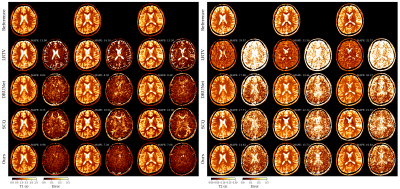 |
Computer Number: 37
2767. A
probabilistic denoising diffusion-based framework for even
higher accelerated quantitative MRI
P. Mayo, C. Pirkl, A. Achim, B. Menze, M. Golbabaee
University of Bristol, Bristol, United Kingdom
Impact: Our proposed approach enables the efficient use
of Improved Denoising Diffusion Probabilistic Models for
reconstructing highly accelerated quantitative MRI
acquisitions, such as Magnetic Resonance Fingerprinting,
leading to more accurate tissue parameter estimations.
|
|
 |
Computer Number: 38
2768. A
Unified Reconstruction Framework for Arbitrarily Accelerated MR
Imaging
Z. Jiang, K. Sun, D. Shen
School of Biomedical Engineering & State Key Laboratory of Advanced Medical Materials and Devices, ShanghaiTech University, Shanghai, China
Impact: We adopt feature representation transfer in the
field of MRI reconstruction to address a practical issue
largely overlooked by existing studies. Our adaptive
reconstruction model can significantly simplify the
deployment of MR reconstruction model and reduce the
development costs.
|
|
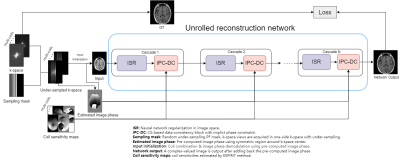 |
Computer Number: 39
2769. MRI
partial Fourier deep learning reconstruction with implicit phase
constraint
L. Zhang, S. Wang, H. Kutsuna, K. Shinoda, C. Wang
Canon Medical Systems (China), Beijing, China
Impact: Our method integrates implicit phase constraint
into partial Fourier deep learning reconstruction network,
it has been proved that the method works well in
multi-anatomy, and it is expected the applications of
partial Fourier with deep learning reconstruction can be
expanded.
|
|
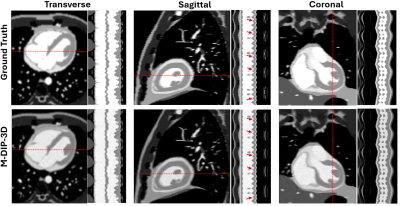 |
Computer Number: 40
2770. Motion-Guided
Deep Image Prior for 3D Real-Time Cine (M-DIP-3D)
C. Chen, M. Vornehm, M. Sultan, S. Arshad, Y. Han, R. Ahmad
The Ohio State University, Columbus, United States
Impact: The proposed method, M-DIP-3D, facilitates 3D
real-time cine imaging from highly undersampled data. By
directly learning the underlying motion and content
variation manifold, M-DIP-3D produces images with minimal
motion blur and real-time dynamics.
|
|
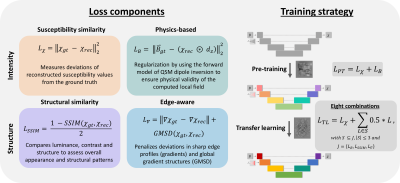 |
Computer Number: 41
2771. The
Role of Optimizing Loss Functions in Transfer Learning to
Address Data Scarcity
S. Graf, W. Wohlgemuth, A. Deistung
University Hospital Halle (Saale), Halle (Saale), Germany
Impact: This study demonstrated the potential of
optimizing transfer learning to adapt pre-trained models,
even from different training settings, to new
target-specific data, highlighting the great potential of
cross-domain knowledge transfer and fine-tuning in
addressing data scarcity.
|
|
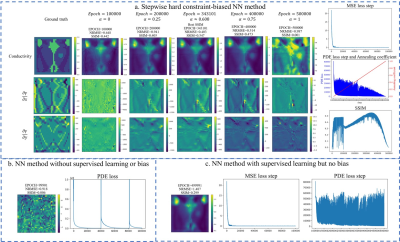 |
Computer Number: 42
2772. Stepwise
hard constraint-biased Physics-informed Neural Networks for
accurate Magnetic Resonance Electrical Properties Tomography
(MREPT)
R. Qin, J. Yang, Z. Zhou, J. Gomez-Tames, S. Huang, W. Yu
Department of Medical Engineering, Chiba University, Chiba, Japan
Impact: This stepwise constraint-biased PINN approach
could enable accurate MREPT without any ground truth, thus
represent a step forward for clinical application of MREPT.
|
|
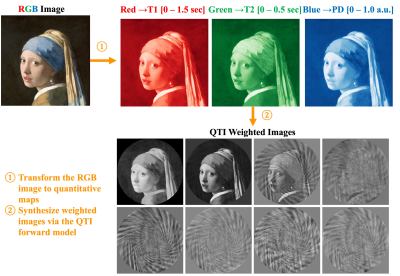 |
Computer Number: 43
2773. RGB2qMRI:
Can Deep Learning Models for Quantitative MRI be Trained with
RGB Pictures?
S. Wang, A. Samadifardheris, J. A. Hernandez-Tamames, C.
Pirkl, M. Vogel, L. Nuñez-Gonzalez, D. H. Poot, F. Wiesinger
Erasmus MC, Rotterdam, Netherlands
Impact: We demonstrated the feasibility of using widely
available, non-anatomical RGB pictures to train deep
learning models for qMRI, addressing the issue of limited
training data, reducing costs of building training datasets,
and avoiding biases toward specific health or disease types.
|
|
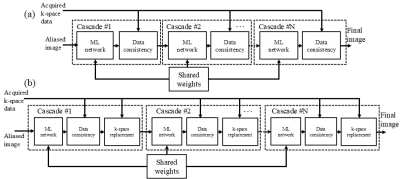 |
Computer Number: 44
2774. K-space
replacement layer for improving image sharpness in machine
learning reconstruction
S. Z. K. Sajib, S. Bhave, S. Sharma
Canon Medical Research, Cleveland, United States
Impact: The proposed method has the potential to
increase clinical throughput by reducing scan time while
maintaining high image quality.
|
|
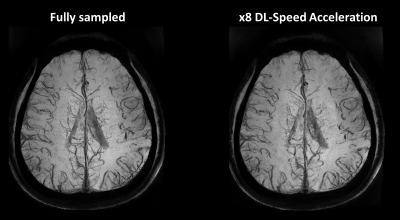 |
Computer Number: 45
2775. Accelerating
High Resolution 3D EPI with Deep Learning Reconstruction
N. Abad, S. Ahn, R. Brada, T. Sprenger, B. Fernandez, S.
Banerjee, T. B. D. Yeo, T. Foo
GE HealthCare, Technology & Innovation Center, Niskayuna, United States
Impact: Deep learning based sparse image reconstruction
can accelerate ultra-high resolution 3D EPI scans for brain
imaging with acceleration factors ranging from 3-10,
enabling disambiguation of clinically relevant fine features
in various neuro imaging applications such as SWI, DWI and
fMRI.
|
|
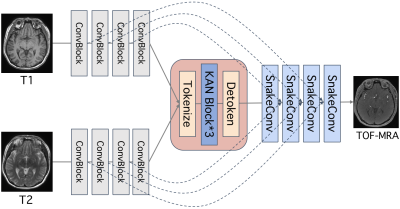 |
Computer Number: 46
2776. Improved
MRA Synthesis with KAN-based Network with Global MIP Guidance
D. Wang, S. Pasumarthi, A. Shankaranarayanan, G. Zaharchuk
Subtle Medical Inc. , Columbia, United States
Impact: The proposed method enables TOF-MRA synthesis
from faster T1- and T2-weighted MRI images. The synthesized
images closely match standard-of-care (SOC) TOF-MRA,
accurately depicting vessels in major central areas, thus
eliminating need for lengthy acquisition process of
SOC-TOF-MRA in clinical settings.
|
|
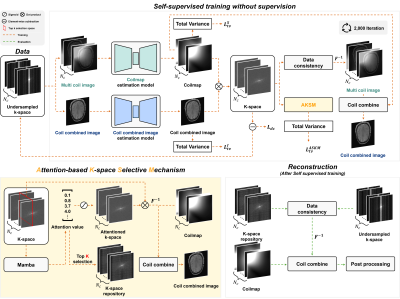 |
Computer Number: 47
2777. ZSSPI
: Zero-Shot Scan Specific Parallel Imaging MRI Reconstruction
using Attention based mechanism
J. Joo, H. Kim, T. Eo, H. Won, D. Hwang
Yonsei University, Seoul, Korea, Republic of
Impact: Our AKSM enables robust zero-shot MRI
reconstruction by effectively utilizing undersampled k-space
data. This breakthrough allows for significant scan time
reduction without compromising image quality, potentially
transforming clinical practice and making advanced MRI more
accessible to patients.
|
The International Society for Magnetic Resonance in Medicine is accredited by the Accreditation Council for Continuing Medical Education to provide continuing medical education for physicians.